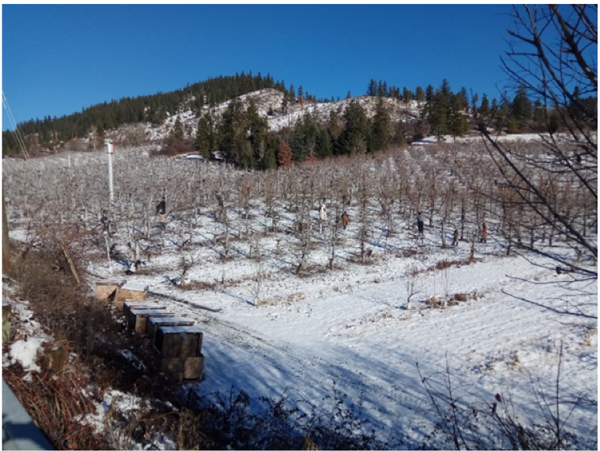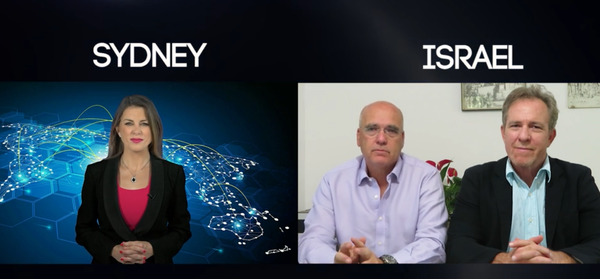Roots’ interim pot heating results deliver plant wet weight increase of up to 272%
Hey! Looks like you have stumbled on the section of our website where we have archived articles from our old business model.
In 2019 the original founding team returned to run Next Investors, we changed our business model to only write about stocks we carefully research and are invested in for the long term.
The below articles were written under our previous business model. We have kept these articles online here for your reference.
Our new mission is to build a high performing ASX micro cap investment portfolio and share our research, analysis and investment strategy with our readers.
Click Here to View Latest Articles
Ag-tech pot-stock, Roots Sustainable Agricultural Technologies (ASX:ROO), has released outstanding interim results for its world-first open field Root Zone Temperature Optimisation (RZTO) heating pilot, showing an increase in plant weight of up to 272%.
ROO’s disruptive RZTO technology optimises plant physiology for increased growth, productivity and quality by stabilising the plant’s root zone temperature.
Conducted during October and November this year in an open field in Washington, ROO’s patented technology was used on several cannabis strains in various RZTO heating treatment architectures (total of 216 plants) and corresponding control groups (total of 81 un-heated plants).
Cannabis roots were heated to stabilise root temperatures at optimal degrees, despite air temperatures dropping below zero degrees centigrade.
Compared with the un-heated control crop, the heated plant weight increased by between 40% and 272%.
This proof-of-concept was conducted in collaboration with American Farms Consulting and its clientele of licensed cannabis producers.

Commenting on these pleasing results and the company’s prominent market position, co-founder, Dr Sharon Devir said: “These interim cannabis results have exceeded our expectations, particularly as they were achieved in an open field with heavy frost conditions.
"The wide wet weight range was due to the different types of cannabis strains and heat management architectures.
“Our RZTO technology is the only way for growers to mitigate the risks of high-value crops in open fields, where plants are exposed to extreme external weather conditions.
“Companies like Roots are in a sweet spot in the US cannabis market at present. The recreational cannabis market in the United States has developed rapidly with many crops now being grown in the open field due to lower initial capital expenditure."
Multiple technologies for market disruption
By way of background, Israel-born ROO is developing and commercialising modular, cutting-edge technologies to address critical problems faced by modern agriculture, including plant climate management and the shortage of water for irrigation.
Management discusses its two key technologies — RZTO and Irrigation by Condensation (IBC) — in the short video below:

Roots offers investors a good mix of state-of-the-art technology — which generally translates into higher margin earnings — and the stability and diversification of a company with multiple revenue streams from mainstream agriculture and the burgeoning medical cannabis industry.
Less than a month ago, Roots was granted an Australian patent for the 'smart pipe' system component of its RZTO technology.
ROO also recently released results from a successful pilot on greenhouse-grown chives using its RZTO cooling technology, showing a 257% increase in net weight.
ROO is the only company in the world with commercial two-in-one root zone cooling and heating technology in its arsenal — something that gives it a considerable competitive edge.
How the tech works
Leveraging the principle of Ground Source Heat Exchange (GSHE), Roots installs a closed-loop system of pipes.
The lower part is installed at a depth where soil temperature is stable and not affected by weather extremes, and the upper part in the target crop’s root zone just below the soil surface.
Water flowing through the lower pipes is charged by the soil’s stable temperature, and that heated (or cooled) water is pumped through the pipes installed in the root zone, where the heat (or cold) is discharged.
This significantly increases net weight, increases growing cycle planting options, improves quality, and mitigates extreme heat and cold stress, while significantly reducing energy consumption by stabilising and optimising the roots zone temperature.
This video gives a good idea of RZTO basics:
Economic benefits drive demand
As well as optimising performance, the technology offers lower installation costs and reductions in energy consumption, bringing maximum benefit to farmers through ROO’s two-in-one root zone heating and cooling tech and off-the-grid IBC technology.
In addition to increasing plant wet weight and corresponding net weight by stabilising the root temperatures, Roots said it expects final results for this latest proof-of-concept to show faster growth rates. This will allow growers to benefit from higher, premium prices for longer periods.
With these performance figures, farmers can expect in most treatments and breeds to get a return on their investment within a year, depending on the price per gram the farmer receives.
On this note, Devir said: “As cannabis prices have fallen due to an increase in supply, growers are needing to turn to ag-tech equipment to dramatically improve crop yield and quality.”
Consequently, demand for the product could be increasingly driven by clients who take the stance that RTZO isn’t just an optional extra — rather, that it’s a ‘must-have’ to be economically viable.
Regardless of the product, once there is a shift from discretionary to non-discretionary expenditure by users, there is a material prospect of suppliers being able to be more aggressive with their pricing, leading to higher margins.
Results provide marketing leverage
Devir highlighted that these interim results have allowed the company to kick off discussions with other licensed cannabis growers in the US, although he acknowledged that the nature of ag-tech means it will take time before it matures into sales.
Crunching the numbers, chief executive of American Farms Consulting, Elad Kohen, said: “Roots’ RZTO technology has allowed our clients to better control crop climate during the tricky fall conditions, dramatically increasing wet weight by as much as 272%.
"Based on the local Washington state price per gram (US$0.30), this yield increase can equate to an additional income of US$60,000 to US$405,000 per acre for 40% to 270% yield increase respectively. There is direct correlation in most strains between wet weight, size of the plant and the eventual yield per plant.
“The recreational and medical cannabis markets are highly competitive, with growers increasingly looking to new, clean technologies to increase profitability and extend growing cycles. We look forward to continue and expand our working relationship with Roots, and together, help many producers increase the quality and productivity of their work," Kohen added.
The global legal pot market (inclusive of both the medical and recreational segments) is expected to be worth US$146.4 billion by 2025, according to Grand View Research.
General Information Only
S3 Consortium Pty Ltd (S3, ‘we’, ‘us’, ‘our’) (CAR No. 433913) is a corporate authorised representative of LeMessurier Securities Pty Ltd (AFSL No. 296877). The information contained in this article is general information and is for informational purposes only. Any advice is general advice only. Any advice contained in this article does not constitute personal advice and S3 has not taken into consideration your personal objectives, financial situation or needs. Please seek your own independent professional advice before making any financial investment decision. Those persons acting upon information contained in this article do so entirely at their own risk.
Conflicts of Interest Notice
S3 and its associated entities may hold investments in companies featured in its articles, including through being paid in the securities of the companies we provide commentary on. We disclose the securities held in relation to a particular company that we provide commentary on. Refer to our Disclosure Policy for information on our self-imposed trading blackouts, hold conditions and de-risking (sell conditions) which seek to mitigate against any potential conflicts of interest.
Publication Notice and Disclaimer
The information contained in this article is current as at the publication date. At the time of publishing, the information contained in this article is based on sources which are available in the public domain that we consider to be reliable, and our own analysis of those sources. The views of the author may not reflect the views of the AFSL holder. Any decision by you to purchase securities in the companies featured in this article should be done so after you have sought your own independent professional advice regarding this information and made your own inquiries as to the validity of any information in this article.
Any forward-looking statements contained in this article are not guarantees or predictions of future performance, and involve known and unknown risks, uncertainties and other factors, many of which are beyond our control, and which may cause actual results or performance of companies featured to differ materially from those expressed in the statements contained in this article. S3 cannot and does not give any assurance that the results or performance expressed or implied by any forward-looking statements contained in this article will actually occur and readers are cautioned not to put undue reliance on forward-looking statements.
This article may include references to our past investing performance. Past performance is not a reliable indicator of our future investing performance.






